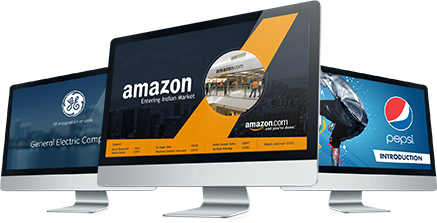Data visualization, to put it simply, is the presentation of data in a graphical format. This involves turning analytics and insights presented in a way other than textually, making difficult concepts much easier to comprehend.
The human brain processes information much easier when presented with large amounts of data translated into charts and graphs.
Using visuals is a quick and easy way to convey complex concepts in a manner that everyone can understand.
Data visualization, therefore, can:
- Identify areas of improvement
- Clarify which factors influence customer behavior
- Help allocate products
- Predict sales volumes
In many industries, sales in particular, seeing is believing. The ability to view information and apply solutions in real-time is important.
So, here are five essential dashboard data visualizations that sales teams can use to improve their performance and boost their sales advantage.
Geographical Heatmaps
Also known as “choropleth maps,” these refer to a color-coded matrix that represents value or risk. These are maps of countries or cities, highlighted or annotated to show numbers.
Preparing and analyzing heatmaps are incredibly easy. These could be up and running just by merely translating the necessary data. This type of data visualization is usually quicker to interpret than numbers at first glance because its colors usually range from green (good values) to red (bad values).
An example of sales teams using heatmaps would be when they’re determining their target demographic—a consensus of households that would be interested in their products.

Bubble Charts/Word Clouds
Bubbles charts are similar to heatmaps, only that the objects that represent values are, well, bubbles. You can use colors can to represent values for this type of data visualization.
Word clouds look like jumbled words that seem to have no correlation until given context. These are clusters of words in different sizes. The bigger and bolder they appear, the more often they are mentioned in a text—the more important they are.
In this text for example, you will see the word “data” 13 times. If it were to appear as a word cloud, it would appear to be the biggest word.
Waterfall Charts
To better understand finances, waterfall charts help translate financial data and project a clearer picture of how gains, losses, and balances are affecting bottomline.
To put it in the context of marketing, another example would be how leads and blog traffic in the last year could be affecting your business.
Radar Charts
Also referred to as “spider charts,” these best visualize multiple performance variables that are sub-components of other variables. When you’re uncertain about the units of measurement used, these provide a rough estimate.
An example would be gauging customer experience after purchasing a product. The different variables would include price, customer support quality, ease of the sales process, and user-friendliness of the service.

Bullet/Gauge Charts
Gauge charts, also referred to as dial or speedometer charts, represent one metric at a time. Their goal is simple: to show how close you are to achieving a certain goal.
Say you’re aiming for a certain number of leads for a project. Assume that number is 100 and you’re only at the 65 mark. It’s easier to visualize that using a gauge chart. Apart from that, you’d know how important this value is to the discussion since it is emphasized in graphical form.
Today, as data collection becomes more streamlined, information becomes abundant, meaning there’s so much to learn. The only problem is, not everyone can comprehend all this.
Data visualization is an effective strategy if you want to translate complex datasets into information that is more concise, straightforward, and understandable to those who are not familiar with the concept you are discussing.
It continues to help sales teams and analysts look at data more imaginatively. Ultimately, this is a useful skill to develop, effectively conveying and leveraging information in a visual format.






